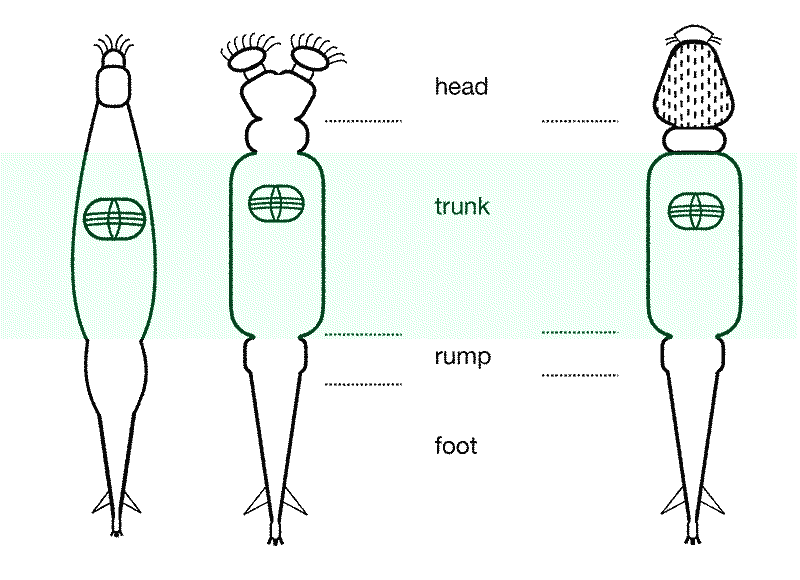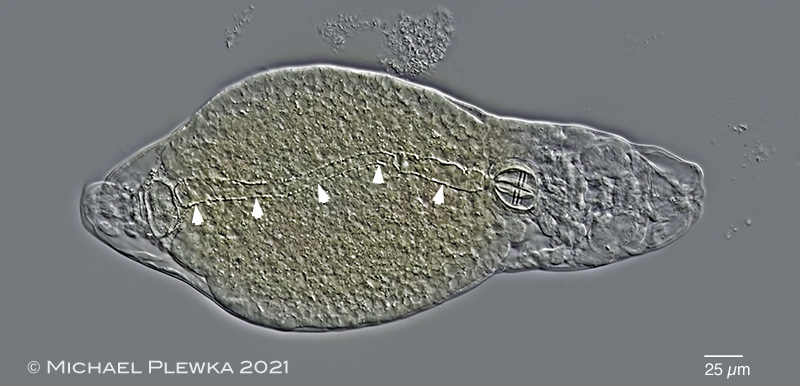| The trunk is the 3rd part of the whole animal behind the head with corona (1st) and the neck (2nd). |
| |
 |
| Diagram of the whole body (trunk green). |
| |
| Intestinal system of Adinetidae, Philodinidae and Philodinavidae |
| One of the most obvious parts is the trunk is the intestinal system, which begins with the buccal tube, followed by by the mastax with trophi, followed by the esophagus / stomach lumen. |
|
| Many bdelloid rotifers have a stomach lumen (left image; arrowheads). In most cases the stomach lumen is less obvious than in the left image. By compressing the specimen it may be possible to see the stomach lumen better (see right image). By feeding the living specimens with carmine grains it is also possible to decide if a stomach lumen is present or not. But the condition for that is that the animal is feeding, i.e. the corona must be exteded, which is not always the case. It is also possible to make the stomach lumen visible by maceration with SDS. See image below: |
|
| |
| Intestinal system of Habrotrochidae |
In contrast to other bdelloids the rotifers of the family Habrotrochidae do not have a stomach lumen, instead there is a syncytial mass. The diet is formed into pills in a short chamber behind the mastax, and the pills are digestetd in the stomach protoplasm. So all rotifers of the genera: Habrotrocha, Otostephanos and Scepanotrocha have pills. Below are some examples given: |
|
| In certain species the pills are not clearly visible (for example Habrotrocha tripus). By feeding the living specimens with carmine it is possible to decide if a stomach lumen is present or not. |
| |
| ambiguousness |
| Some specimens of other families of Bdelloidea also may have pill-like diet as well: |
|
 |
| Also the "pills" in the stomach of this creeping specimen (in the posterior part, i.e. left of the glands which are marked by arrowheads) may suggest that this Macrotrachela species belongs to the family Habrotrochidae. |
 |
| Only by compression of the specimen the stomach lumen becomes visible. |
| |